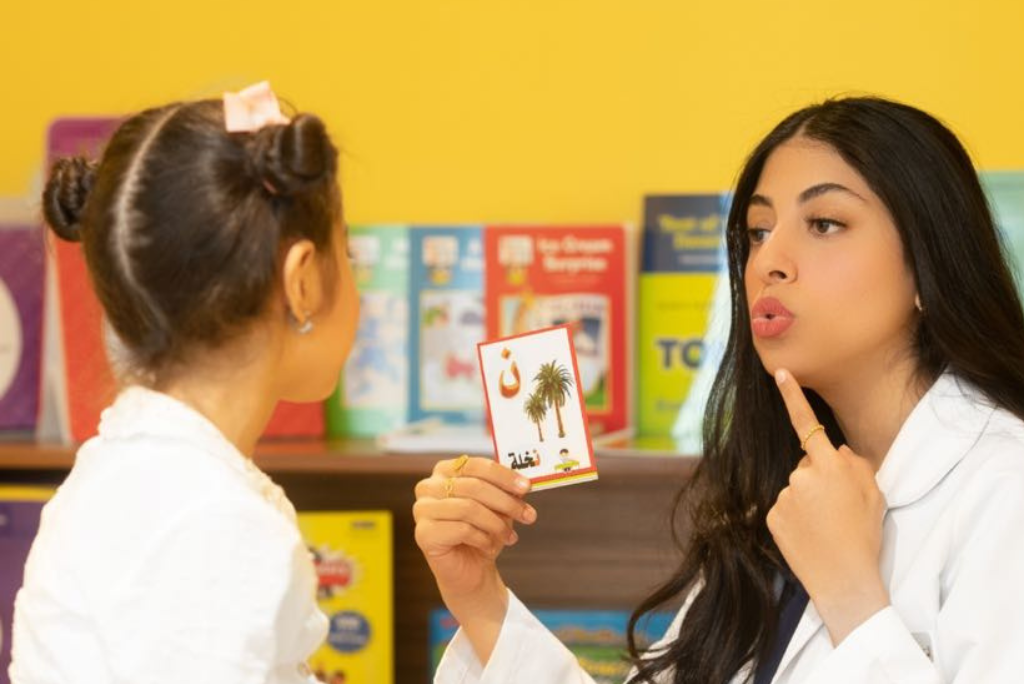
Speech therapy can help people who have difficulty speaking to communicate better and to break down the barriers
that result from speech impediments. The goals of speech therapy include improving pronunciation, strengthening the muscles used in speech, and learning to speak correctly.
Speech therapy can be used for a lot of different speech problems and disorders, from smaller problems like a hoarse voice up to partial loss of speech due to brain damage
Some people need help talking and communicating. Others need speech therapy to process and understand language better.
Speech therapy can help you improve your:
- Early language skills (especially children learning to talk and communicate).
- Ability to use your voice.
- Language comprehension (how well you understand words and language).
- Fluency (how well and how comfortably you can use language).
- Clarity and expression (how easily you can communicate what you want to).
Who needs speech therapy
If your child is displaying any of the following behaviors, an evaluation by a speech language pathologist may be in their best interest:
- Isn’t babbling or making exploratory sounds with their voice
- Has been stuttering or struggling to complete known words
- Is showing inconsistency in speech sounds produced
- Isn’t pointing or gesturing to indicate needs or awareness
- Only says a small number of words as a toddler
- Is making significant and frequent phonological mistakes (patterns of speech sounds substituted/deleted)
- Is struggling to communicate and/or experiencing frustration when interacting with others
- Is having word-finding difficulties and/or has a very limited vocabulary
- Has trouble understanding and following simple statements
- Has trouble following simple directions or responding to questions
- Is extremely quiet in social situations
- Shows a lack of interest in engaging with and playing with peers or developmentally appropriate toys/games
- Is having trouble in other academic areas like reading and writing
- Is having difficulty accurately producing simple speech sounds as a toddler
- Has issues articulating certain sounds, letters, or letter patterns including later developing sounds:
Normal speech and language milestones

How does speech therapy works
Speech therapy involves techniques like language practice, pronunciation exercises, voice therapy, and swallowing exercises. It begins with a thorough assessment, including observation of communication strategies, challenges, and frustrations.
Among children,
Speech therapy for infants, toddlers, and children involves fun and engaging activities like play, language exercises, reading, picture cards, and modeling correct sounds. This helps make learning more enjoyable.6
Parents or caregivers often attend sessions and learn ways to support children at home.6 The ST or SLP will tailor the treatment plan to the child’s developmental stage. Early recognition and intervention (treatment) can help improve outcomes.
In Adults
With adults, the ST or SLP will begin with an assessment to identify specific challenges. They will then create a specific care plan that addresses underlying concerns such as:9
- Medical conditions
- Accent modification
- Voice challenges
- Dysfluency
- Pronunciation
- Conversational language
- Problem-solving
- Memory exercises
Speech therapy can occur in a class, small group, online, or one-on-one. Speech therapists typically assign exercises to practice at home in order to reinforce what you learn. Activities might include:1011
- Vocal warm-ups like humming
- Breaking words into syllables to improve clarity
- Contrasting word exercises—for example, “ship” versus “sheep”
- “Pausing” practice (for stuttering)
- Repetition after listening to a native speaker
- Repetition exercises for sounds like “s”
- Speech rate control—for example, by tapping hands to a beat
- Pitch exercises
- Breathing and posture exercises
Receptive language exercises include:1
- Memory or problem-solving exercises
- Reading comprehension
- Speech supplementation (written, gestural, voice amplifier, speech-generating devices)
- Word association
- Communication partner exercises, such as practicing eye contact and active listening
Exercises for swallowing and feeding include:
- Diet modification (pureed to solid foods)
- Oral muscle strengthening (like tongue “push-ups”)7
- Swallowing exercises
https://www.ncbi.nlm.nih.gov/books/NBK561506
https://my.clevelandclinic.org/health/treatments/22366-speech-therapy
https://www.lumierechild.com/blog/who-is-a-candidate-for-speech-therapy/https://www.researchgate.net/figure/Normal-pattern-of-speech-development_tbl1_230732978


